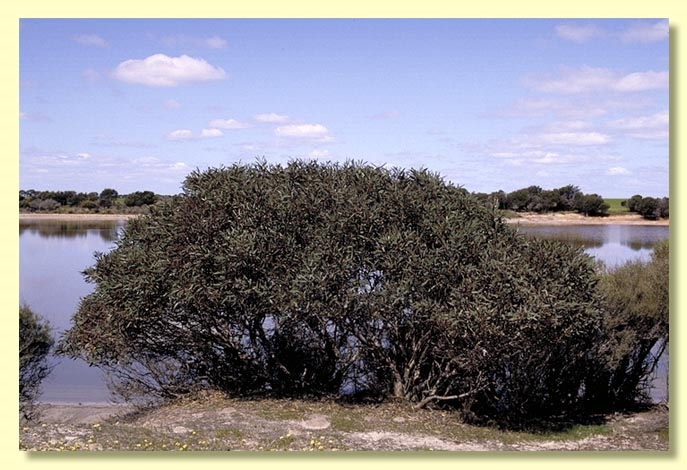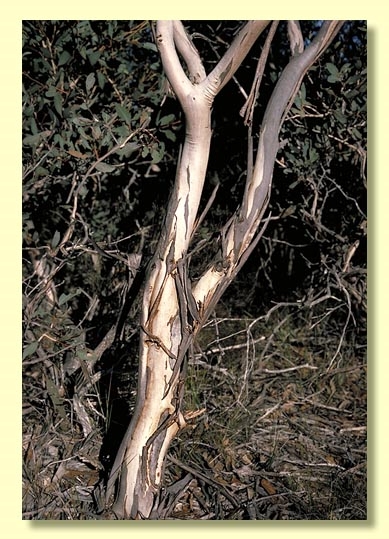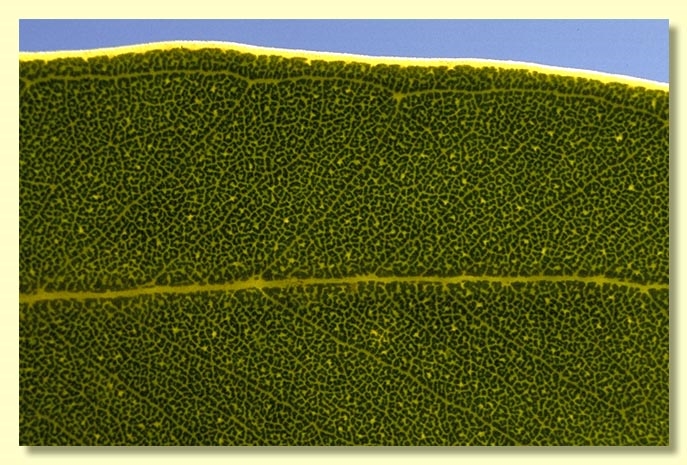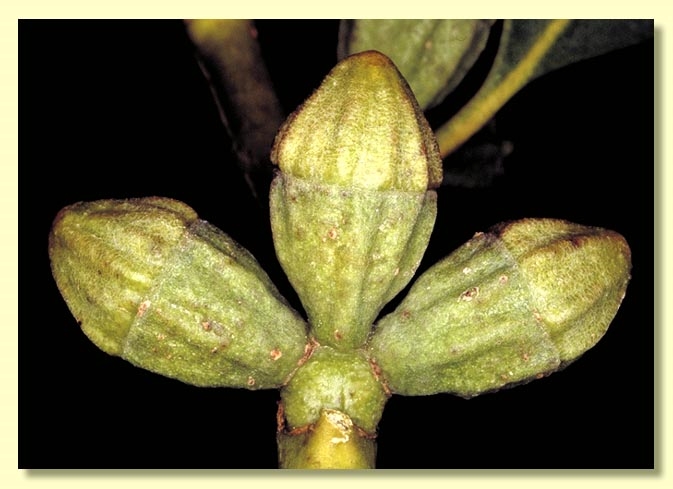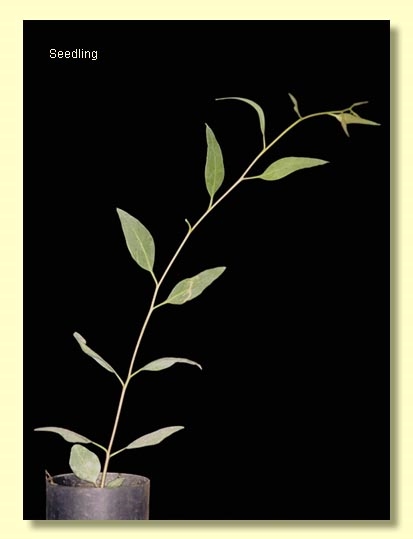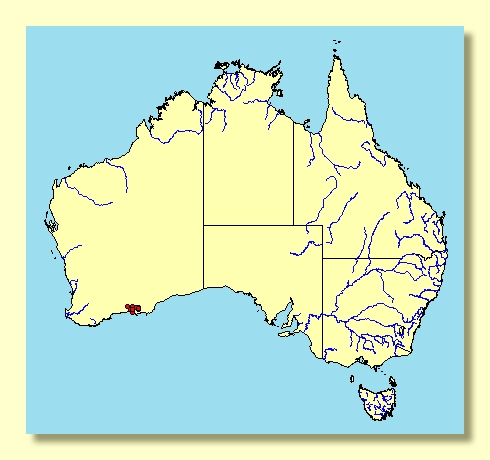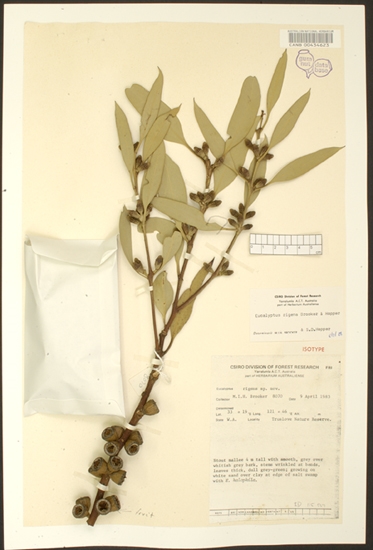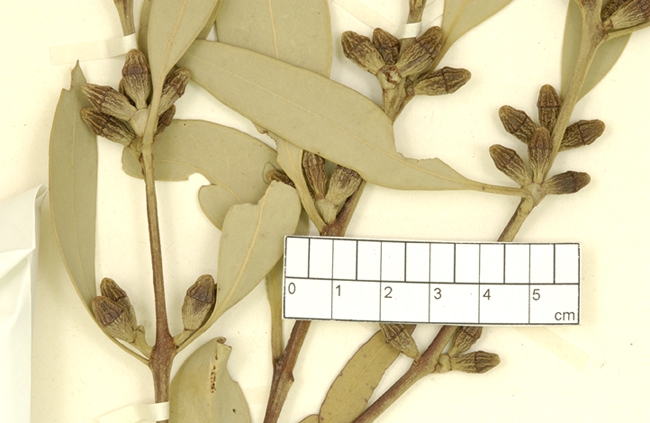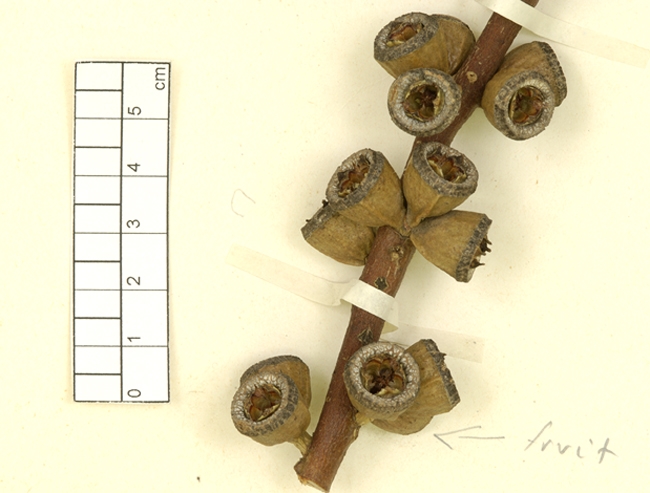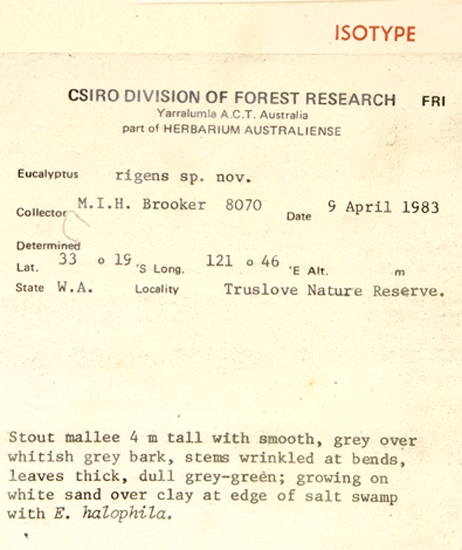Eucalyptus | Symphyomyrtus | Dumaria | Rigentes
Euclid - Online edition
Eucalyptus rigens
Bark wholly smooth, grey over whitish grey to pinkish brown, shedding in strips.
Branchlets with sparse, small, clear pith glands.
Juvenile growth (coppice or field seedlings to 50 cm): stems rounded to square in cross-section; juvenile leaves always petiolate, opposite to sub-opposite at lowest nodes, then mostly alternate, ovate to lanceolate, 5–10.5 cm long, 2–3.8 cm wide, dull, green, becoming slightly glossy on coppice > 0.5 m tall.
Adult leaves thickish, usually alternate (occasionally sub-opposite in some reproductive crowns), petioles 0.8–2 cm long; blade lanceolate, 6.5–12.5 cm long, 1–2.2 cm wide, base tapering to petiole, margin entire, apex pointed, concolorous, at first dull, grey-green but soon weathering to green and slightly glossy, side-veins greater than 45° to midrib, reticulation dense to very dense, intramarginal vein close to margin, oil glands sparse, intersectional.
Inflorescence axillary unbranched, peduncles short and stout, 0.2–0.7 cm long, buds usually 3, sessile (only central bud shortly pedicellate). Mature buds ovoid to slightly obovoid (1.2–1.5 cm long, 0.6–1 cm wide), longitudinally striate, scar present, operculum bluntly conical (0.5–0.7 cm long), stamens inflexed, anthers cuboid to wedge-shaped, versatile, dorsifixed, dehiscing by longitudinal slits, style long and straight, stigma rounded to blunt, locules 3 or 4, the placentae each with 4 vertical rows of ovules. Flowers creamy white.
Fruit usually sessile, shortly cylindrical to cupular often with two prominent ribs, 0.9–1.3 cm long, 0.8–1.3 cm wide, disc descending vertically, valves 3 or 4, near rim level.
Seeds dark to pale brown, 1.5–3 mm long, obliquely pyramidal, dorsal surface shallowly reticulate, ventral surface ridged, with conspicuous marginal flange, hilum terminal.
Cultivated seedlings (measured at node 10): cotyledons reniform; stems rounded or square in cross-section; leaves always petiolate, opposite for 3 to 4 nodes then alternate, ovate-lanceolate, 4.5–7 cm long, 1.8–3.5(4) cm wide, dull, green but becoming glossy by ca node 7.
Flowering has been recorded in August.
The obvious salt tolerance may make E. rigens useful in salinity reclamation.
A bushy mallee endemic to Western Australia, restricted to the subcoastal area north of Esperance, from north-west of Scadden to east of Mt Ney, always around salt lakes on sandy to clayey sites. The stems are smooth and the adult leaves dull to slightly glossy, light green to blue-grey.
Eucalyptus rigens belongs in Eucalyptus subgenus Symphyomyrtus section Dumaria because the buds have two opercula, stamens are strongly inflexed, ovules are in four rows on the placentae and cotyledons are reniform. E. rigens is closely related to only two other species—E. famelica and E. litorea. Together the three species form series Rigentes, further characterised by the brown flattened-pyramidal seed with a partial marginal flange and the branchlets with sparse clear pith oil glands. The species of series Rigentes might be confused with series Incrassatae which has black pyramidal seeds and with series Furfuraceae (e.g. E. scyphocalyx) which has flat, ventrally scurfy seeds.
E. rigens is three-budded compared with both the smooth-barked E. famelica and rough-barked E. litorea, which are seven-budded. It occurs further inland than E. famelica, which tends to occur on water-logged sites.

